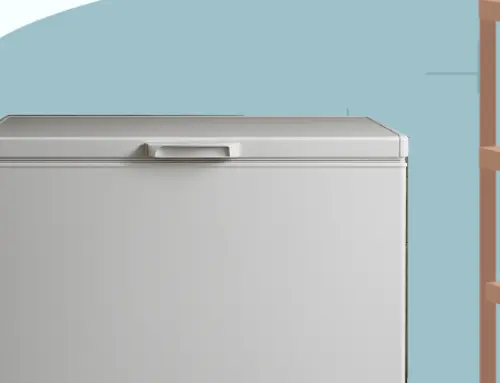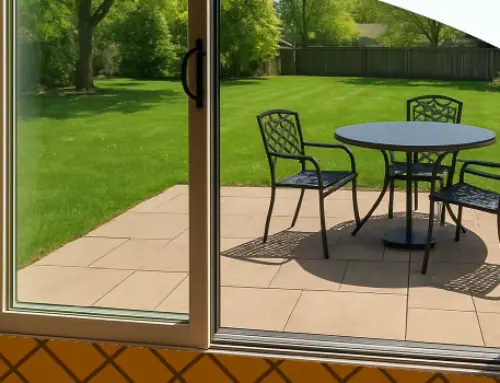Which is More Energy Efficient: Metal or Shingles Roof?
by Tyler Castle
8.9 min read
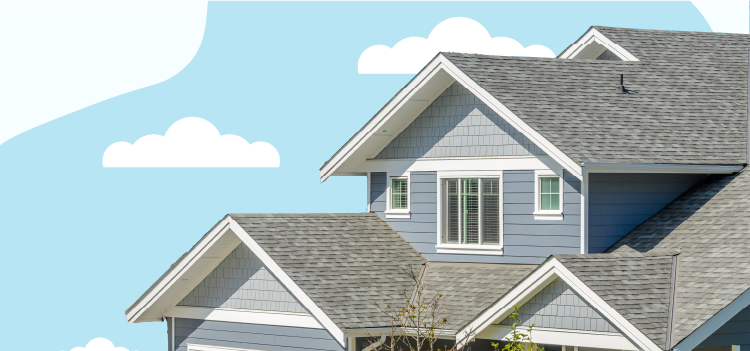
Selecting roofing materials presents a crucial decision for homeowners: should they opt for metal or shingles? This choice impacts both the aesthetic appeal of a home as well as energy efficiency. We’ll break down the pros and cons of each roofing type and which is considered the most energy efficient.
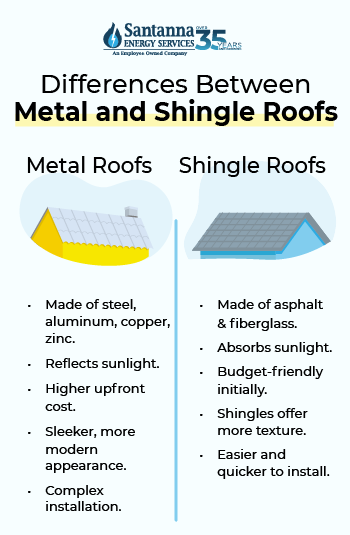
Which is more energy efficient: metal or shingle roofs?
When choosing roofing material for your home, you should also consider its energy efficiency. The type of roof you select can affect how well your home maintains temperature. So, which is more energy efficient: metal or shingle roofs? Let’s break it down:
Metal roof energy efficiency
A metal roof can save a homeowner around 40% on energy costs. The most efficient type of metal roof depends on your location and the material you choose.
Metal roofs are known for their ability to redirect a substantial portion of the sun’s rays. This keeps indoor temperatures cooler and reduces the load on air conditioning systems. This is particularly beneficial in hot climates. Metal roofs have high thermal emittance, which allows them to quickly release absorbed heat, further aiding in temperature control.
Shingle roof energy efficiency
Shingles generally offer lower energy efficiency as they absorb heat rather than reflect it, leading to increased energy consumption for cooling, especially in warm climates. Darker-colored shingle roofs and asphalt shingles absorb more heat than lighter-colored material.
However, there are “cool roofing shingles” that are specifically designed to reflect heat. This can lead to lower household energy consumption and could also lead to a decrease in CO emissions. These shingles are coated with reflective material that minimizes heat absorption.
So, which is more energy efficient, metal or shingle roofs? The answer is: metal roofs. This is because metal roofs reflect heat rather than absorb it.
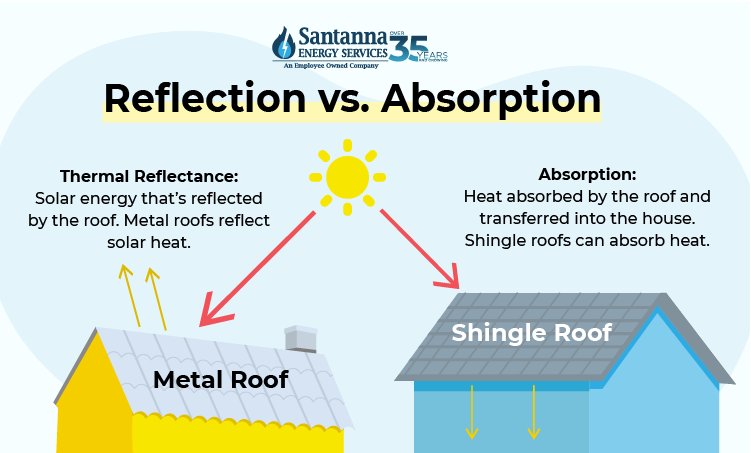
What is a metal roof?
Metal roofs are roofing systems made from metal materials that provide a durable and long-lasting option for residential buildings. They are known for their sleek appearance and ability to withstand various weather conditions.
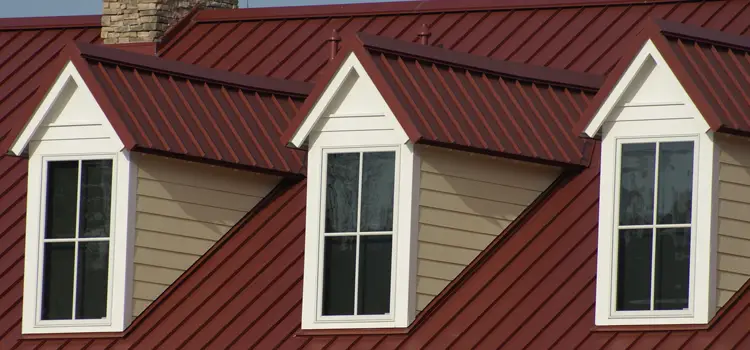
How long do metal roofs last?
According to Architectural Digest, metal roofs last 40 – 70 years, due to the material’s resistance to extreme weather conditions. This makes this material ideal for locations that experience tough weather.
Types of metal roofs
Metal roofs aren’t made from just one type of material. Here are some of the most common materials used:
Aluminum: This lightweight material is corrosion resistant and doesn’t get as hot as steel. Aluminum is often durable and made from eco-friendly materials.
Copper: Although the most expensive material for metal roofs, copper compliments historic looking houses with distinct architecture. Copper roofs don’t rust, burn or require painting. Copper roofs are also champions at handling cold climates where snow and ice are common.
Zinc: Zinc crafted metal roofs are eco-friendly and made from recycled materials. Zinc roofs are affordable, have a long lifespan and are low maintenance.
Steel: Tin made metal roofs are easy to install, lightweight and great for a rustic aesthetic.
What are roof shingles made of?
Asphalt roof shingles are made of a base layer of fiberglass or organic materials, coated with asphalt, and finished with mineral granules. These materials provide weather resistance and durability.
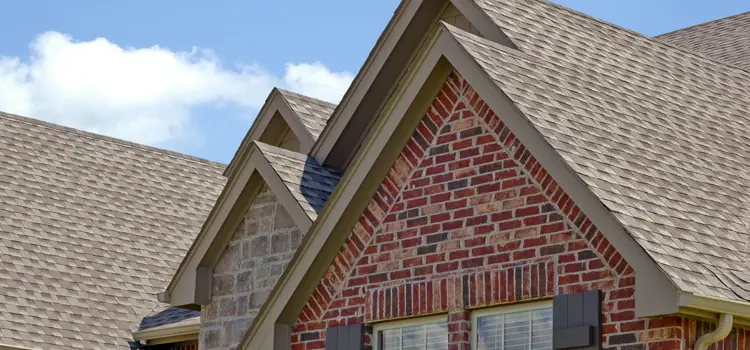
How long do shingles last?
The lifespan of roof shingles depends on the material, climate, and installation quality. Here’s an overview of typical lifespans for different types of shingles:
- Asphalt shingles (most common): 15-30 years
- Architectural shingles (higher quality asphalt): 25-30 years
- Wood shingles: 20-40 years, depending on climate and maintenance
- Slate shingles: 50-100+ years
- Clay or concrete shingles: 50-100+ years
Types of shingle roofs
Architectural Shingles: Feature a multi-dimensional appearance for a more textured look and enhanced durability. These shingles are constructed from multiple layers of asphalt, which not only enhances their durability but also makes them more resistant to wind, rain, and other harsh weather conditions.
3-Tab Shingles: Traditional flat shingles with a simple design, offering a more economical option. Known for their simplicity and affordability, they offer a budget-friendly roofing solution for homeowners.
Composite Shingles: Made from a blend of materials, offering improved durability and often mimicking other materials like wood or slate. These shingles mimic the appearance of more expensive roofing materials like wood, slate, or tile.
How to clean roof shingles
Proper cleaning of your shingles is essential to extend their life and maintain their appearance. Cleaning techniques include removing debris, using soft brushes, and applying cleaning solutions. Here’s a general process on how to clean roof shingles:
- Gather your safety materials like a sturdy latter, non-slip shoes, and a harness to tether yourself to your chimney or another sturdy structure.
- Clear the area around your home of outdoor furniture, plants, or any items that could be affected by runoff.
- For general cleaning, use a mix of water and a mild detergent or a cleaning solution for your specific roof type.
- Use a garden or pump sprayer to evenly apply the cleaning solution to the roof. Start at the peak and work your way down, allowing the solution to sit for 15-20 minutes to break down dirt, algae, or moss.
- Use a low-pressure hose (avoid pressure washers, as they can damage shingles) to rinse off the cleaning solution. Start from the top and work your way down to prevent water from getting underneath the shingles.
For tough moss or algae, gently use a soft-bristle brush or broom to scrub the affected areas after applying the cleaning solution.
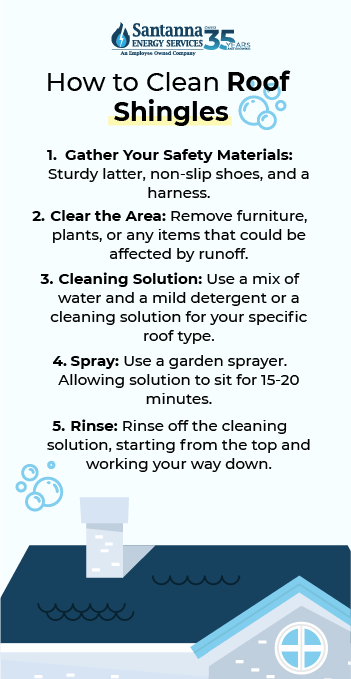
How hot does a roof get in the summer?
Knowing how hot your roof gets in the summer can help you decide what roofing material is right for you. For hotter climates, it’s ideal to choose a roofing material like metal, that can reflect heat. For colder climates, choosing a roofing material that can absorb heat like shingles can help your home retain heat more efficiently.
Asphalt shingle roofs can heat to 150 degrees in the summer!
How hot does a metal roof get in the summer?
Metal roofs, despite their reflective properties, can still become warm in the summer. Unpainted metal roofs can reach up to 145 degrees while roofs painted with reflective material can feel up to 42% cooler.
How hot do shingle roofs get in the summer?
Shingle roofs can heat up to 150 degrees in the summer because shingle roofs absorb heat rather than reflect heat. Lighter colored shingles can reach 102 degrees in the summer.
Environmental benefits of metal roofs vs. shingle roofs
Metal roofs are known to be an environmentally conscious option because they are often made from recycled materials and are fully recyclable. Their energy-efficient properties reduce the need for air conditioning, lowering overall energy consumption.
Asphalt shingles are less eco-friendly due to their petroleum-based composition and limited recyclability, contributing to landfill waste. Although, modern roofing shingle technology is working to make this material more environmentally friendly. Some companies are making their asphalt roofing material from recycled tires and plastic bags to enhance their eco-friendliness.
Are metal roofs more expensive than shingles?
Yes. Metal roofs tend to have a higher upfront cost than shingles. The price varies depending on three main elements: the specific metal used, installation challenges, and overall roof size.
Metal roofs cost on average $13,200 while a shingle roof costs around $8,500.
However, the need for more regular maintenance and replacement of shingles can lead to higher expenses over time. Installing a metal roof over existing shingles can save on the cost of removing the old roofing material and reduce labor time. This method can also provide an extra layer of insulation and protection.
Longevity and durability: metal roofs vs. shingles
Metal roofs have a long lifespan, often lasting over 50 years. They withstand extreme weather conditions, including high winds, heavy snow, and hail. Shingle roofs generally last 15-30 years and are more susceptible to damage from weather extremes, requiring more frequent repairs or replacements.
Pros and cons of metal roofs vs. shingle roofs
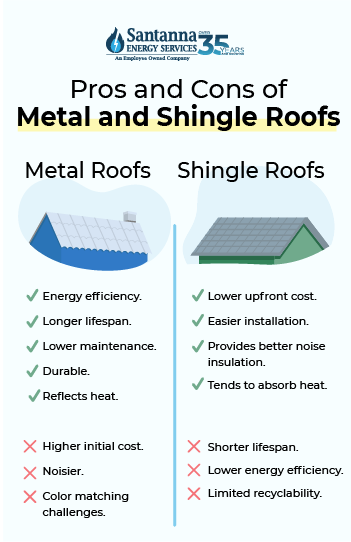
Pros of metal roofs
Superior energy efficiency due to heat reflectivity.
- Longer lifespan and lower maintenance needs.
- Environmentally friendly and recyclable.
- Durable and weather-resistant, handling extreme conditions effectively.
Cons of metal roofs
- Higher initial cost compared to shingles.
- Noisier in rain unless insulated.
- Color matching challenges for repairs and potential aesthetic issues over time.
Pros of shingle roofs
- Lower upfront cost.
- Easier installation and widespread availability of various styles.
- Provides better noise insulation compared to metal roofs.
Cons of shingle roofs
- Shorter lifespan and higher maintenance needs.
- Lower energy efficiency, resulting in higher cooling costs in warm climates.
- Less environmentally sustainable due to petroleum-based materials and limited recyclability.
Which roof type is ideal for Midwest residents?
Asphalt shingle roofing is well-suited for Midwest climates, which experience diverse weather conditions, including heavy snowfall and ice. Shingle roofing can absorb heat which is ideal to regulate your home’s temperature during harsh colder months.
FAQ’s
How much is metal roofing?
On average, metal roofing can cost $4 – $16 per square foot. The overall cost of metal roofing depends on the roofing material you choose, your roof size, and color.
Can you put a metal roof over shingles?
Yes, you can put metal roofing over shingles. However, some areas only allow re-roofing of one layer of material at a time. Be sure to check with your local building department to confirm.
Can you paint metal roofing?
Yes, you can paint over metal roofing. Painting a metal roof can help extend its lifespan by providing an additional layer of protection against corrosion, UV rays, and weather damage.
Choosing the right roofing material is more than just a matter of aesthetics—it’s a key decision that impacts your home’s energy efficiency, comfort, and long-term costs. At Santanna Energy Services, we understand the importance of making informed decisions to enhance your home’s energy efficiency and overall performance. Our goal is to support you in achieving the best possible energy outcomes for your home. Explore our energy solutions to choose a plan that’s right for your lifestyle.
There’s peace of mind in knowing you’ll pay the same monthly supply cost amount for your electricity or natural gas supply without any uncertainty — no matter what. Santanna’s Unlimited Energy option protects your bills from fluctuating supply charges no matter the changes in seasons. For over 35 years, Santanna has served customers in Illinois, Indiana, Pennsylvania, Michigan, and Ohio. Our mission is to provide innovative and cost-effective energy solutions that will help our customers achieve their energy goals.
Tyler is an experienced energy professional, having worked for Santanna Energy Services, for the past four years. He is passionate about renewable energy and believes that diversifying the energy grid is the key to a sustainable future. Tyler is dedicated to supplying consumers with the best possible energy solutions and works diligently to make sure that Santanna can deliver the highest quality service.



